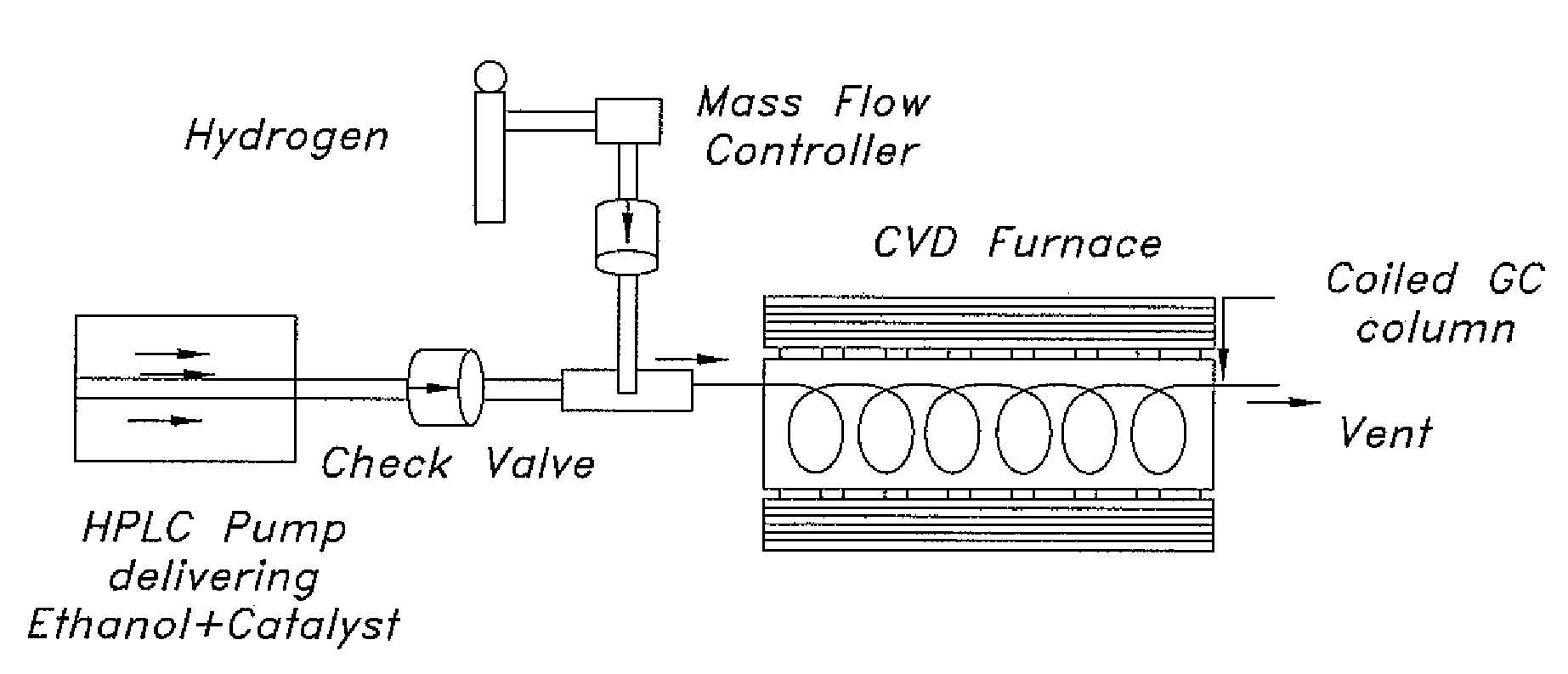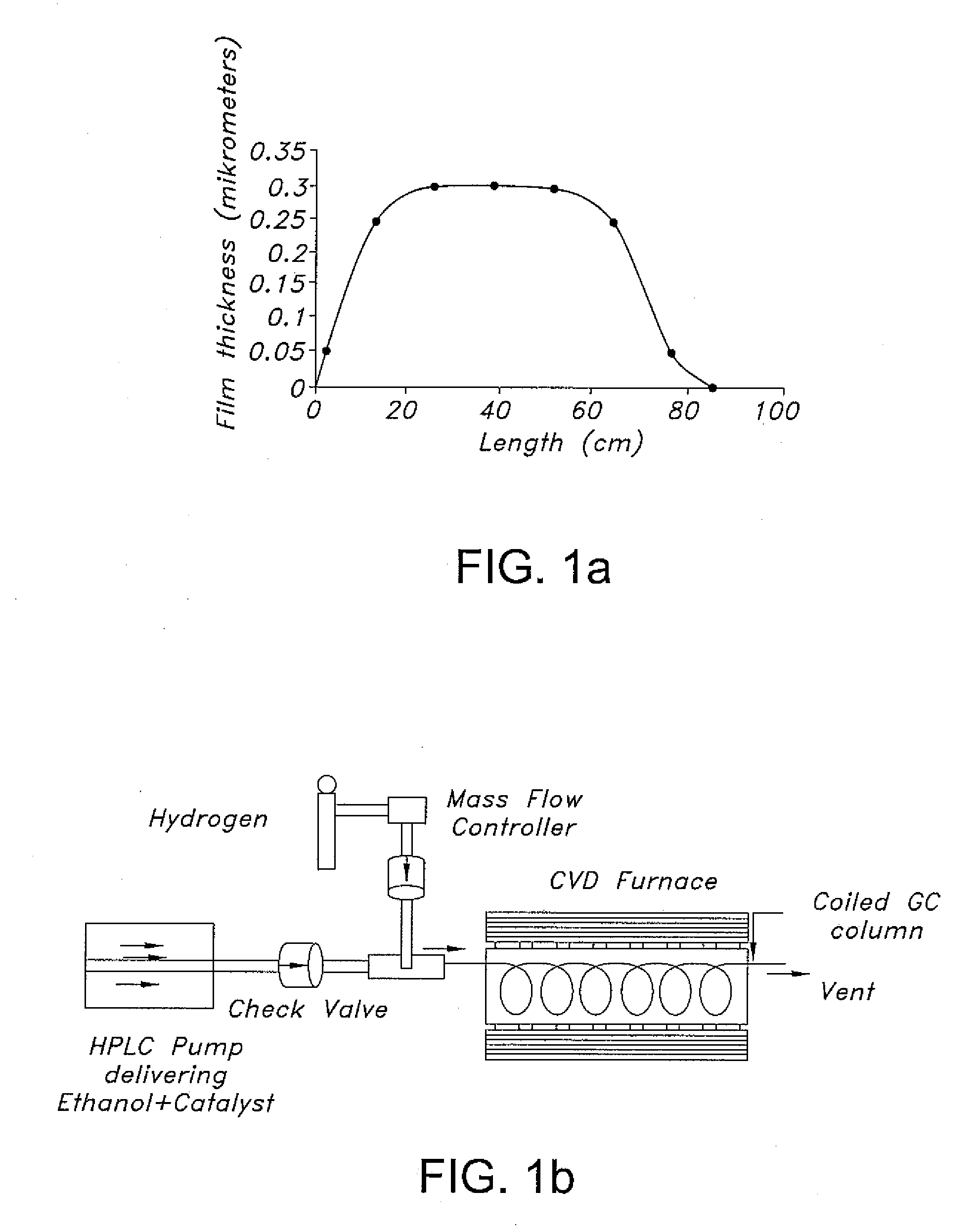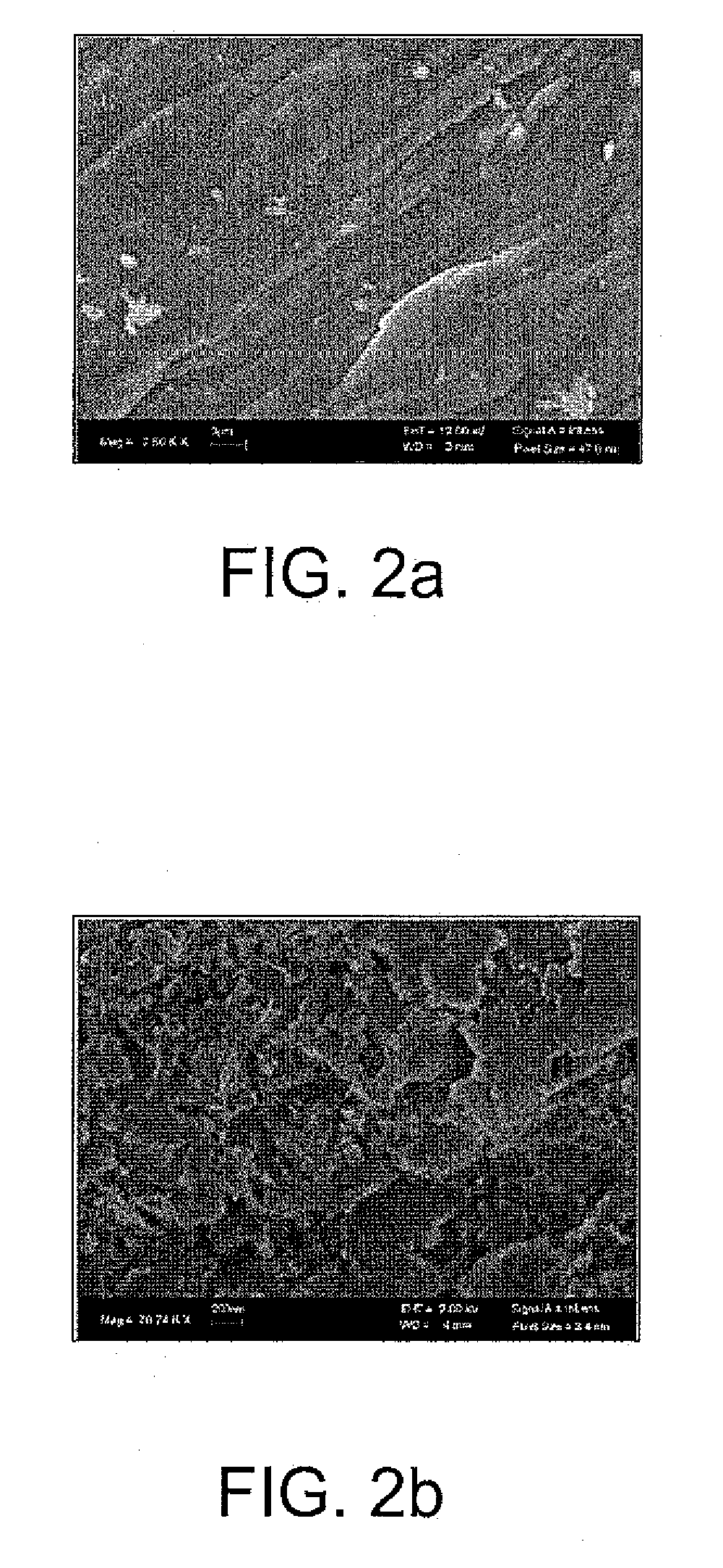Chemical vapor deposition of carbon nanotubes on structures and substrates
a carbon nanotube and chemical vapor deposition technology, applied in the field of nanotechnology, can solve the problems of significantly more complex swnt synthesis, achieve better coverage, thicker, and more uniform surfaces, and improve the effect of thickness uniformity
- Summary
- Abstract
- Description
- Claims
- Application Information
AI Technical Summary
Benefits of technology
Problems solved by technology
Method used
Image
Examples
Embodiment Construction
[0002]The United States government may hold license and / or other rights in this invention as a result of financial support provided by governmental agencies in the development of aspects of the invention. Parts of this work were supported by a grant from the US EPA STAR grant RD 830901.
BACKGROUND
[0003]1. Technical Field
[0004]The present disclosure relates generally to the field of nanotechnology. More particularly, the present disclosure relates to the production of nano-materials, e.g., nanotubes, nanohorns, fullerenes nano-onions and nanocomposites. Exemplary embodiments of the present disclosure relate to the production of carbon nanotubes (CNTs), e.g., single wall nanotubes (SWNTs) and multiwall nanotubes (MWNTs). Exemplary embodiments of the present disclosure relate to the production, e.g., by self assembly, of CNTs on structures. Exemplary applications of the herein disclosed apparatus, systems and methods include novel CNT applications relating to sorbency, e.g., particle ad...
PUM
| Property | Measurement | Unit |
|---|---|---|
| Temperature | aaaaa | aaaaa |
| Temperature | aaaaa | aaaaa |
| Temperature | aaaaa | aaaaa |
Abstract
Description
Claims
Application Information
 Login to View More
Login to View More - R&D
- Intellectual Property
- Life Sciences
- Materials
- Tech Scout
- Unparalleled Data Quality
- Higher Quality Content
- 60% Fewer Hallucinations
Browse by: Latest US Patents, China's latest patents, Technical Efficacy Thesaurus, Application Domain, Technology Topic, Popular Technical Reports.
© 2025 PatSnap. All rights reserved.Legal|Privacy policy|Modern Slavery Act Transparency Statement|Sitemap|About US| Contact US: help@patsnap.com



